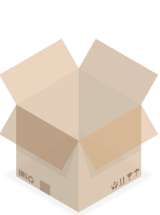The Importance of Pantone Colours
When looking to get products printed with your branding you want to be sure that they will consistently match your brand guides. It is important to have a deeper understanding of how pantone colours work to understand how colours may differ when printed onto physical objects.
What are Pantone Colours?
Pantone Matching System (PMS) is a global standardised colour system used across many industries. The word ‘pantone’ comes from the company that invented the system Pantone Inc. This has become the standard language of colour communication from designer to manufacturer to retailer and customer.
The system works by standardising 1,114 colours and assigning each colour a number and name. By using this system, people who work in different departments can be consistent with your brand by using a number to identify the correct colour and avoid mistakes.
Printed Packaging & Pantone Colours
Pantone colours are extremely important to us as manufacturers of printed packaging. We work with our customers to ensure any packaging they receive not only matches each other but matches their branding guidelines.
By using pantone colours we are able to match up the exact colour based on what type of material we will print onto. The last thing we want is tape to be one colour and the box to be another. If you aren’t sure on your brand's exact pantone our team can help you with this and ensure that the colours used on all platforms match.
Coated & Uncoated Materials
A consideration to make when it comes to printed products is the material being printed on. There are two different types of material, coated and uncoated. These are simple enough to distinguish that coated has a glossy finish and uncoated is a matt finish.
The reason this needs to be taken into consideration is that a pantone colour ink may print differently on each despite being the same colour. If you are printing on an uncoated material such as a cardboard box this is more absorbent than an coated material. This means that your pantone colour will likely print darker than it would on the uncoated.
To be certain you can use pantone reference booklets which are available in coated and uncoated variants. These sample books will help you see the difference the material will have on the 2 surfaces. Allowing you to select 2 matching pantones references to get the same results. Alternatively, you can speak to our team who will pass this onto our design studio to confirm the correct pantone for coated and uncoated materials.
How do Pantone Colour Codes Work?
Each of the 1,114 pantone colours are assigned a unique colour code. When designing or preparing files for print each colour uses a 3 of 4 digit code followed by C or U. The letter refers to the paper being coated or uncoated.
The colours can be broken down into groups breaking down the colour range. Some of these groups include:
- Pantone Metallics - only shown as coated colours. Numbers start with 8.
- Pantone Premium Metallics - only shown as coated colours. 5 digit references starting with the number 10.
- Pantone Pastels & Neons - numbers beginning with 9. The neon base colours start with 9 and pastel base colours have descriptive colour names and 4 digit codes beginning with 0. Each can be shown coated or uncoated.
As long as a manufacturer has the right Pantone number of your product they are able to establish whether or not this will match your specification when printed.
Looking for your own printed packaging? Contact our helpful sales team who will guide you through the process.
When looking to get products printed with your branding you want to be sure that they will consistently match your brand guides. It is important to have a deeper understanding of how pantone colours work to understand how colours may differ when printed onto physical objects.


